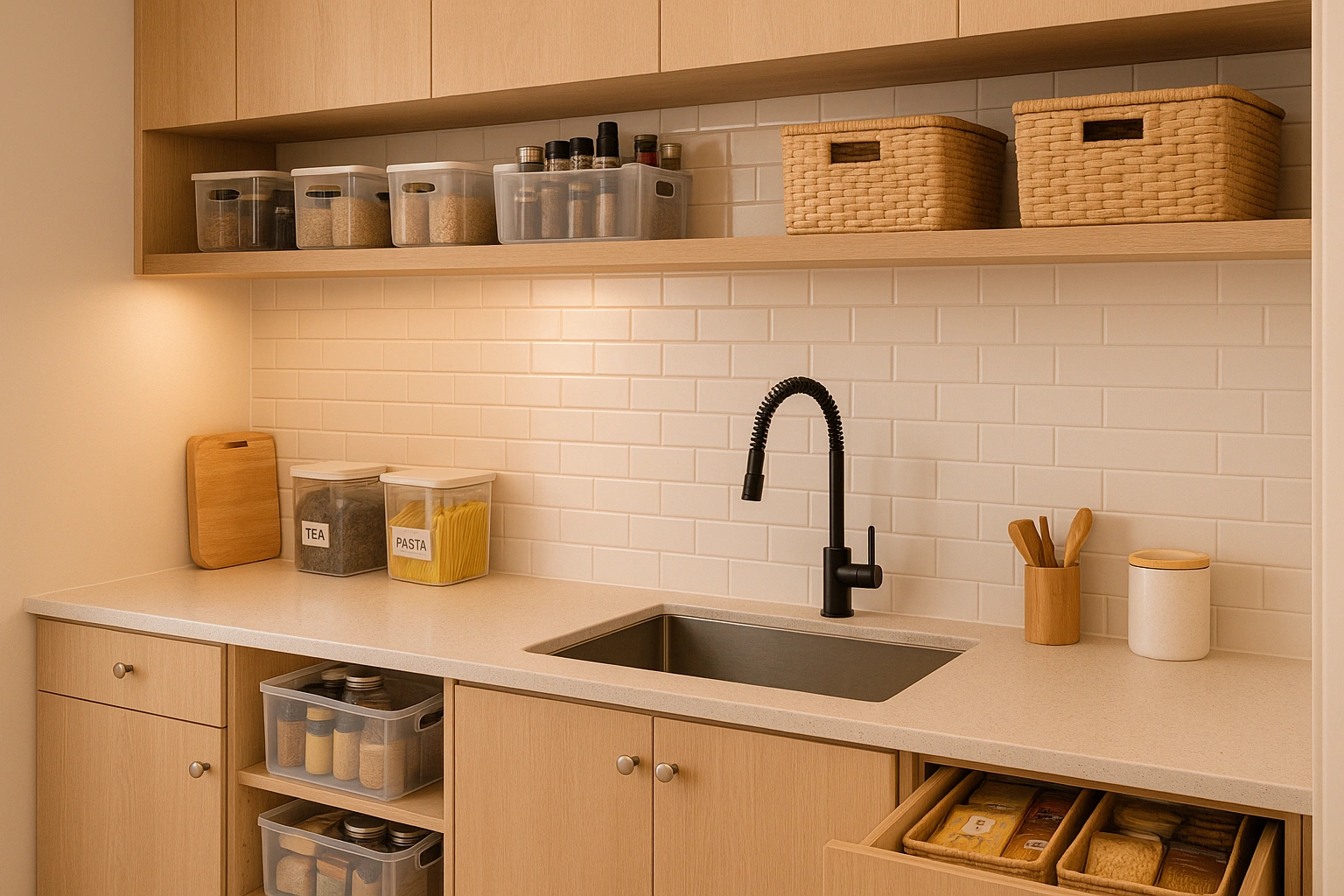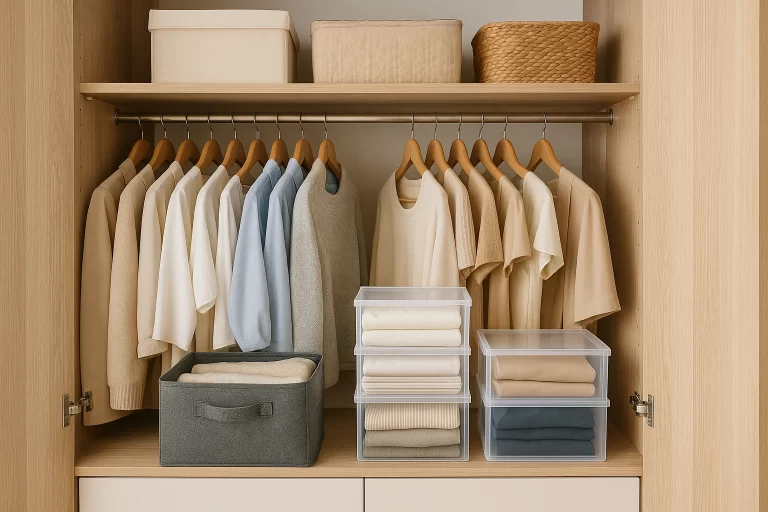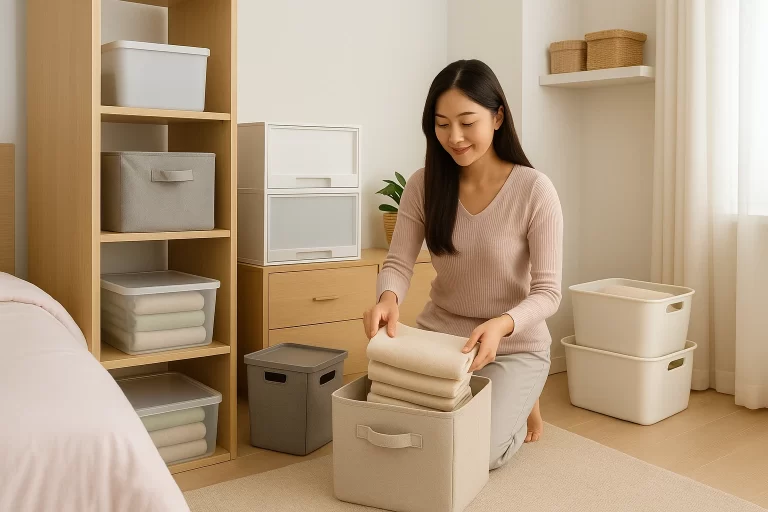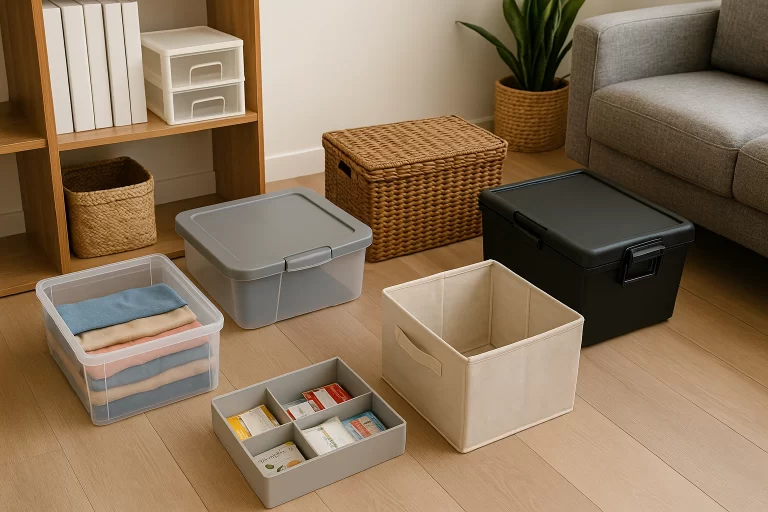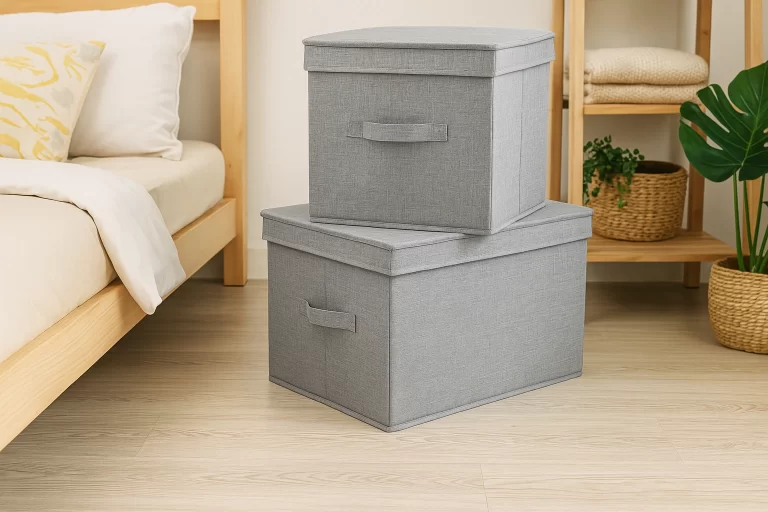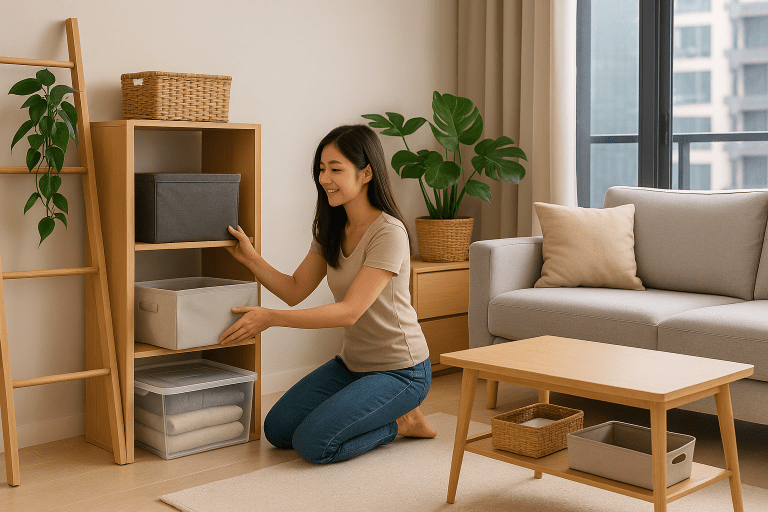How to Organize Your Kitchen Using Storage Boxes: 10 Easy & Effective Steps for 2025
In many homes, the kitchen often becomes the center of daily activity. As meals are prepared and items are used repeatedly, clutter tends to build up quickly. To maintain a clean and functional space, one must learn how to organize kitchen with storage boxes in a strategic and sustainable way.
Using storage boxes is not merely a matter of convenience; it is a thoughtful system that supports visibility, accessibility, and long-term tidiness. This guide will help you plan and execute a storage strategy tailored to your kitchen layout, your lifestyle, and your cooking habits.
Table of Contents
1. Why Kitchen Organization Matters
Before applying any technique, it’s important to understand the value of a well-organized kitchen. A clean kitchen improves efficiency. When storage is intentional, cooking becomes enjoyable instead of stressful.
More specifically:
- Items are easier to find when stored by category
- Space is maximized, especially in small kitchens
- Cooking time is reduced because tools and ingredients are within reach
- Waste is minimized because food and supplies are visible and accessible
- Cleaning is easier because there’s less clutter on countertops
The more consistently you organize the kitchen with storage boxes, the more control you have over your kitchen routine.
📎 Article You May Interested: Top 10 Storage Boxes in Malaysia 2025
2. Evaluate Your Kitchen Layout
To begin, stand in your kitchen and observe how you move through it. This evaluation provides the foundation for your organization plan.
Start by identifying:
- High-use zones (stove, sink, countertop, spice drawer)
- Storage zones (cabinets, fridge top, under-sink)
- Wasted spaces (corners, vertical gaps, under appliances)
- Pain points (where clutter builds up, what’s hard to reach)
When evaluating layout, consider the triangle rule (sink-stove-fridge), and organize around that workflow. Choose storage boxes that fit specific spaces, rather than force your space to fit the box.
3. Choose the Right Storage Boxes
Before buying anything, understand your needs. Each box should serve a specific function in your kitchen. Choosing the right storage boxes depends on space, items, and frequency of access.
Ask yourself:
- What items need to be grouped together?
- Do I prefer boxes with lids or open containers?
- Should the boxes be stackable or drawer-friendly?
Key considerations:
Size matters.
Large boxes fit pantry staples; small bins help organize spice packets, snacks, and cutlery.
Material matters.
Plastic boxes are durable and moisture-resistant. Acrylic boxes are transparent and modern. Fabric boxes are best used in dry, open-air shelves.
Transparency helps.
When you see what’s inside, you use items more regularly. That reduces food waste and prevents overbuying.
Mobility is a bonus.
Boxes with handles or wheels can make cleaning easier, especially under the sink or fridge.
👉 Recommended storage boxes for Malaysian kitchens
4. Categorize Your Kitchen Items
Once you have your boxes, begin sorting. Don’t just store—group with purpose.
Think of each box as a micro-zone:
- Baking Zone: flour, sugar, vanilla extract
- Breakfast Zone: cereal, oats, peanut butter
- Sauce & Condiment Zone: soy sauce, vinegar, ketchup
- Snacks: nuts, dried fruit, cookies
- Utilities: rubber bands, zip locks, foil, cling wrap
📎 Tip: Place a label on each box to show its category. Use waterproof labels for fridge/freezer use.
You place sauces in a box, and then that box belongs to the condiment category.
Group similar items together because grouping builds logic. Logic makes retrieval fast. Fast retrieval reduces mess.

5. Apply Storage Solutions Strategically
Now that you have categorized your items, store them smartly. Your kitchen is dynamic, so your organization system must adapt to how you use it daily.
Strategies:
- Place frequently used boxes on eye-level shelves
- Stack lesser-used items vertically to save base space
- Slide boxes under shelves using baskets with handles
- Use narrow bins for drawer-like pull-outs in deep cabinets
- Store seasonings near the stove, but keep oils in cool zones
You put baking supplies into one bin, and then you slide that bin into the middle shelf where it’s easy to reach.
This step ensures that the way you organize your kitchen with storage boxes actually matches how you live in it.
6. Maintain a Clean and Functional System
Creating a system is only the beginning. To keep your kitchen organized, build habits that reinforce order.
Maintenance Habits:
- Review storage boxes weekly: throw away expired items
- Clean containers monthly: wipe out crumbs or spills
- Re-label when categories shift (e.g. new diet or family needs)
- Return items to the correct box after every use
📎 Tip: Add a reminder to your calendar for monthly maintenance.
You check what’s in the box. You find expired snacks. You throw them away. The box stays usable.
Consistency preserves structure. Without it, systems collapse.
7. Real-Life Examples of Kitchen Box Organization
Let’s look at two sample scenarios to show how people successfully organize kitchens with storage boxes.
Example 1: Small Apartment Kitchen
Amira lives in a 650 sq ft flat in Kuala Lumpur. Her kitchen has only 3 cabinets and no pantry. She used stackable plastic bins with clear lids.
- One bin holds rice and noodles
- One bin holds dry snacks
- One bin holds spices
She labels each and places them vertically on metal shelves.
Her cooking is now faster because everything has a place.
Example 2: Family Kitchen with Kids
Jason and Lily have three children. Their kitchen is chaotic without a system. They introduced colored bins:
- Blue for baking
- Green for lunch prep
- Red for snacks
Now the kids can help. They know which box holds what, and nothing gets lost.
Their story shows how you can organize kitchen with storage boxes in a way that fits real life.
8. Frequently Asked Questions (FAQs)
Q1: Should I use see-through or solid bins?
A: Use transparent bins where visibility matters (pantry, snacks). Use solid bins where aesthetics matter (open shelves).
Q2: What’s the best way to label boxes?
A: Waterproof printed labels are best. Use icons if you have kids or shared kitchens.
Q3: How often should I reorganize?
A: Once every 3–6 months. Or when your habits change.
Q4: Where can I buy good quality storage boxes?
A: Visit our Shopee store for tested, stackable, and durable storage bins:
👉 SHOPEE

Summary and Call to Action
By learning to organize your kitchen with storage boxes, you transform your space.
- Your cooking gets easier
- You waste less time and food
- Your home feels more peaceful
- Your items stay visible and reachable
Ready to upgrade your kitchen?
👉 Shop our favorite storage boxes on Shopee
Or visit our main website: Storage Box World

